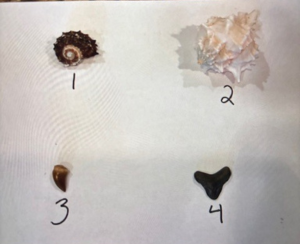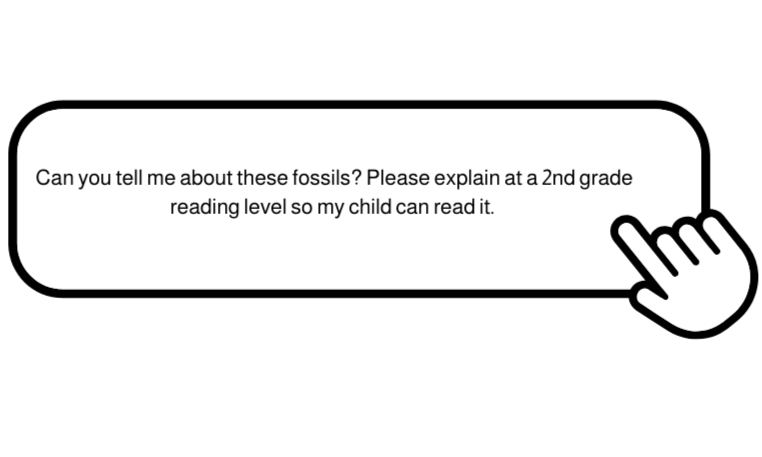Dig site to discovery
Turn fossil finds into learning adventures
If your kids are anything like mine, they dig things up and then the fossils and gems end up all over the house. Jackson has a collection of "treasures" from various dig sites that he's incredibly proud of, but when I ask him about them, I get a lot of "I don't know, but it's cool!"
This activity bridges that gap between "look what I found!" and actually understanding what makes their discoveries so special. We start with the fun part—getting dirty and finding treasures—then use AI to discover the amazing stories behind each find.
Turn fossil curiosity into earth science
Unlike looking things up in a book, AI can adapt explanations to your child's reading level, create personalized stories using their actual finds, and answer the specific questions that spark their curiosity. It transforms scattered collections into organized learning adventures.
Let’s get digging!
I’ve included a quick overview of the activity, but there’s so much more to it.
Inside the FREE Dig site to Discovery Complete Guide you’ll get:
Step-by-step process with real fossil identification examples
10 ready-to-use AI prompt templates, including prompts for creating adventure stories, comparing finds, and exploring ancient ecosystems
Troubleshooting guide for when AI can't identify your mystery rocks
Age modifications from 3-year-old sensory exploration to teen geological research
Extension activities like creating fossil journals and connecting with local museums
Parent reflection questions about your child's scientific curiosity and observation skills
Supply lists plus ideas for different dig locations from your own backyard to fossil parks
Pro tips for organizing finds and making learning stick
Ready to start discovering?
Grab the full guide now for FREE.
The quick how-to
Tools we’ve tested this with: ChatGPT, Claude AI
Items you’ll need: Basic dig site supplies, kids' choice treasures, back-up identification books, access to technology, and a ready-to-explore attitude.
① Go dig and collect
Kids dig until they can’t dig anymore! Choose a few of your fossils to start with. We did 4 at a time.
My kids found:
2 Shells
2 Shark Teeth
② Layout and number your findings
The numbering system helps AI give you specific information about each item, and the photo provides visual context for better identification.
③ Ask AI to indentify your finds
Use specific prompts to get actual fossil information and age-appropriate explanations.
④ Follow AI's lead (and your kids' curiosity)
AI will usually give you follow-up suggestions like "Would you like to know what type of shark this tooth came from?" Use some of them, but make sure your kids ask their own questions too. You may want to ask AI to create adventure stories featuring their finds or explain what the world was like when their fossils were alive.
⑤ Reflect and learn
Discuss the activity and what you learned. Then check out the extension activities by downloading the free guide (if you haven’t already!) My kids are building something inspired by this activity. I’ll post a photo when it’s complete!
Why this activity works
Transforms passive collecting into active learning Kids move from just having random rocks and fossils scattered around the house to actually understanding what they found and why it matters.
Uses AI as a research partner, not a replacement Kids learn to ask follow-up questions, evaluate information, and think critically about what AI tells them. They discover that even when AI can't identify something, that's still valuable learning.
Builds scientific observation skills The process of organizing, numbering, and systematically examining finds teaches methodical thinking and attention to detail.
Bridges digital and physical learning It starts with hands-on digging and discovery, uses technology for research and identification, then goes back to offline activities like fossil journals and drawing.
Connects to deep time and big concepts Kids grasp that they're literally holding pieces of ancient history, which helps them understand geological time scales and how the Earth has changed.
Encourages authentic curiosity Instead of predetermined learning outcomes, kids follow their own questions about what they actually found, making the learning personally meaningful.
Ready to get started?
This is just a quick taste of the full activity. Download the full guide FREE. With it you get more prompts, a full step-by-step guide, many extension activities and so much more!



